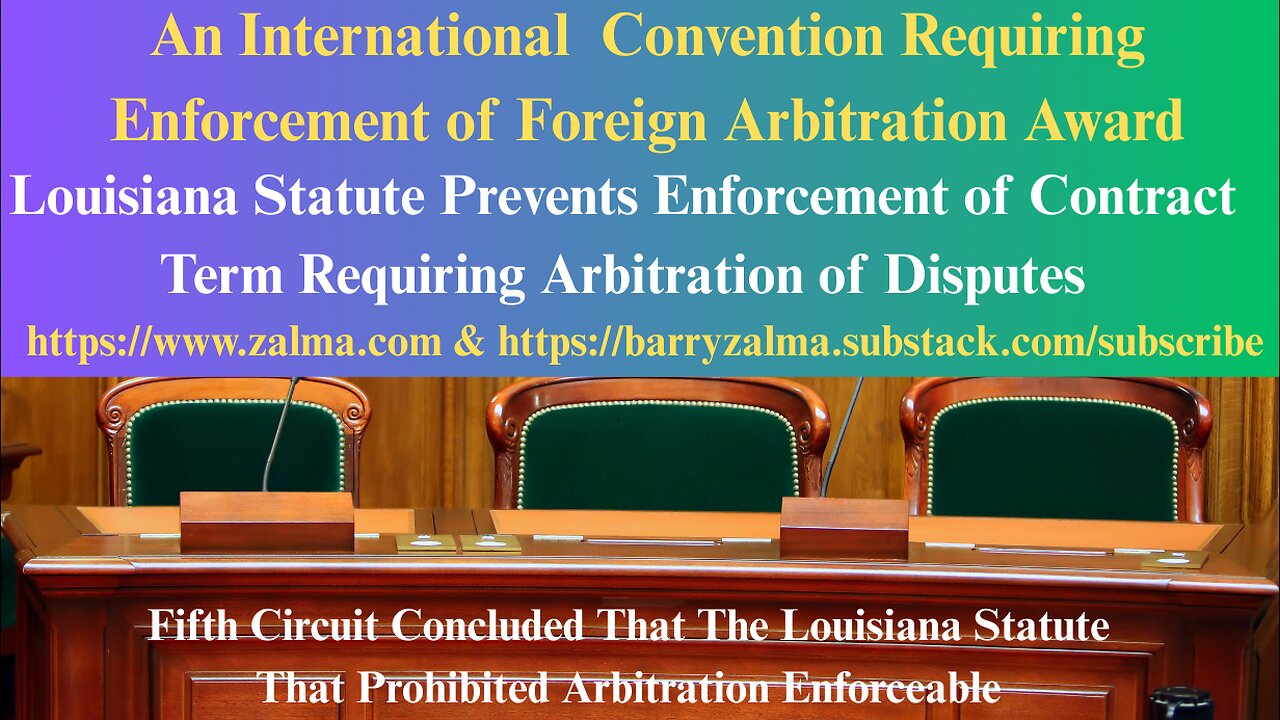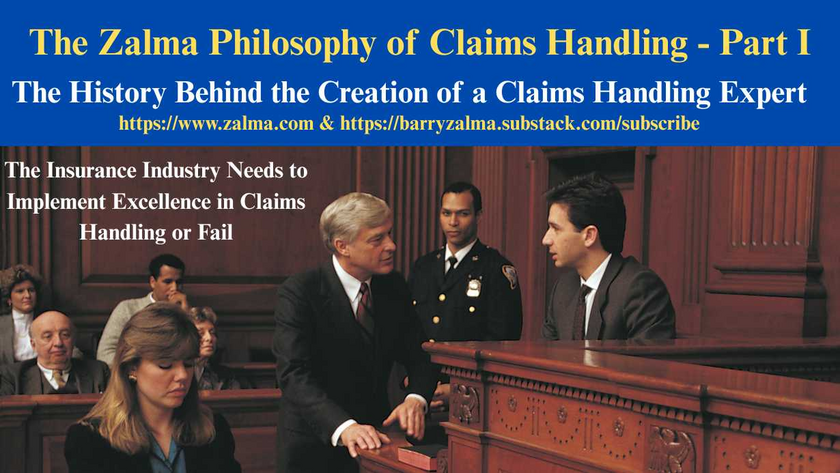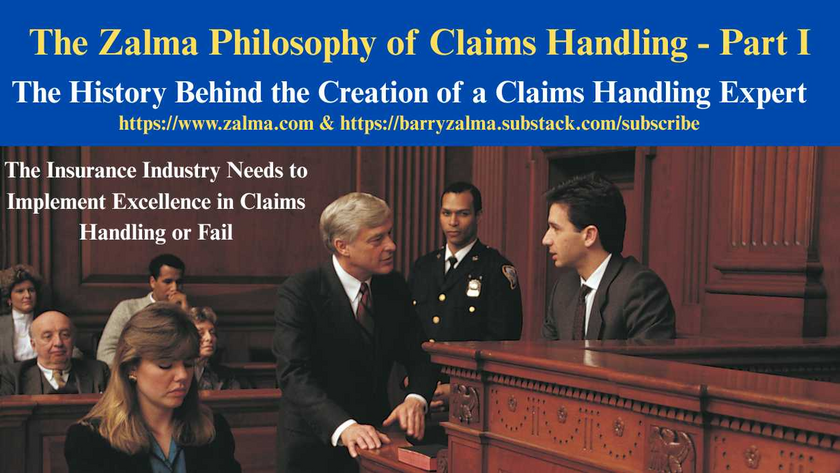
An Effective Tool to Detect, Deter and Defeat
Read the full article at https://lnkd.in/g_E5Rmwu and at https://zalma.com/blog plus more than 4250 posts.
On Today, the Summer Solstice, The Equitable Remedy is Now Available at Amazon.com from Barry Zalma & the Insurance Claims Library
Rescission is an equitable remedy first created in the ecclesiastical courts of Elizabethan England.
When the United States was conceived in 1776 the founders were concerned with protecting their rights under British common law.
Common Law is a form of law developed by judges through tribunals and decisions of courts rather than executive branch action and legislative statutes.
Following the common law tradition, legal principles were referred to courts of equity to “mitigate the rigor” of the common law.
The new United States of America adopted British common law as the law once the U.S. Constitution was adopted in 1789. British common law was only modified by the limitations placed on the central government by the Constitution.
The viability and ability to enforce contracts was recognized as essential to commerce. Courts of law, following the British Common Law, were charged with enforcing legitimate contracts and rendering money judgments against the party who breached the contract.
It became clear, however, that some contract disputes cannot be resolved with a money judgment. Rather, it needed the assistance of the courts of equity whose judges, in the Elizabethan era were presided over by priests who were believed to be better able to render fair judgments.
The term “equity” is associated with notions of fairness, morality and justice. It is an ethical jurisdiction. On a more legalistic level, however, “equity” is the branch of law that was administered in the Court of Chancery prior to the Judicature Acts 1873 and 1875.
This was a jurisdiction evolved to achieve justice and to overcome the rigorous and deficiencies of the common-law. Although application of conscience pervades this aspect of the law, equity never bestowed an unfettered jurisdiction on the Court of Chancery to do what was fair in the settlement of a dispute. Embodying aspects of ecclesiastical law and Roman law, equity developed and gradually emerged as a distinct body of law.
It was not until 1875 that equity was practiced in the common law courts. The existence of a dual system entailed that, for example, when a defendant had an equitable defense to a common law action, he would have to go to the Court of Chancery to obtain an injunction to suspend the proceedings in common-law court. He would then begin a fresh action for relief in the Court of Chancery. Facing duality persisted until the Judicature Acts which created the Supreme Court of Judicature and allowed all courts to exercise both a common law and equitable jurisdiction.
The courts of equity were charged with, among other things, protecting contracting parties from mistake, fraud, misrepresentation and concealment where no damages were involved. It was the obligation of the courts of equity to reach a result that was fair to all of the parties to the contract. The founders of the United States, and the British common law, concluded that equity required that enforcing a contract based on mistake, fraud, misrepresentation or concealment would not be fair.
A court of equity is a court which can apply equitable remedies to disputes. These courts operate within the legal system, but rather than focusing on the application of law, they look at cases and determine outcomes based on fairness. They can be found in many regions of the world. In modern usage in the United States trial courts are empowered to handle both legal and equitable remedies.
Available as a kindle book here. Available as a paperback here.
Available as a hardcover here.
See more insurance law and claims books from the Insurance Claims Library here.
(c) 2022 Barry Zalma & ClaimSchool, Inc.
Barry Zalma, Esq., CFE, now limits his practice to service as an insurance consultant specializing in insurance coverage, insurance claims handling, insurance bad faith and insurance fraud almost equally for insurers and policyholders. He practiced law in California for more than 44 years as an insurance coverage and claims handling lawyer and more than 54 years in the insurance business. He is available at http://www.zalma.com and [email protected].
Subscribe to Zalma on Insurance at locals.com https://zalmaoninsurance.locals.com/subscribe.
Subscribe to Excellence in Claims Handling at https://barryzalma.substack.com/welcome.
Write to Mr. Zalma at [email protected]; http://www.zalma.com; http://zalma.com/blog; daily articles are published at https://zalma.substack.com.
Go to the podcast Zalma On Insurance at https://anchor.fm/barry-zalma; Follow Mr. Zalma on Twitter at https://twitter.com/bzalma; Go to Barry Zalma videos at Rumble.com at https://rumble.com/c/c-262921; Go to Barry Zalma on YouTube- https://www.youtube.com/channel/UCysiZklEtxZsSF9DfC0Expg; Go to the Insurance Claims Library – https://zalma.com/blog/insurance-claims-library/
Detail Charging Defendant for Fraud is Sufficient
Post 5242
Read the full article at https://lnkd.in/g_HVw36q, see the video at https://lnkd.in/gpBd-XTg and at https://lnkd.in/gzCnBjgQ and at https://zalma.com/blog plus more than 5200 posts.
Charges that Advises the Defendant of the Crime Cannot be Set Aside
In United States Of America v. Lourdes Navarro, AKA Lulu, No. 25-661, United States Court of Appeals, Ninth Circuit (December 4, 2025) Lourdes Navarro appealed the district court’s denial of her motion to dismiss the indictment and enter final judgment was in error.
FACTUAL BACKGROUND
The indictment alleged that insurers reimburse only for medically necessary services. Navarro performed unnecessary respiratory pathogen panel (RPP) tests on nasal swabs collected from asymptomatic individuals for COVID-19 screening.
Navarro billed over $455 million to insurers for those additional RPP tests that she knew to be medically unnecessary. These allegations constituted a plain, concise, and definite written ...
Louisiana Statute Prevents Enforcement of Contract Term Requiring Arbitration of Disputes
Post 5241
Read the full article at https://www.linkedin.com/pulse/international-convention-requiring-enforcement-award-barry-sttdc, see the video at and at and at https://zalma.com/blog plus more than 5200 posts.
In Town of Vinton v. Indian Harbor Insurance Company, Nos. 24-30035, 24-30748, 24-30749, 24-30750, 24-30751, 24-30756, 24-30757, United States Court of Appeals, Fifth Circuit (December 8, 2025) municipal entities including the Town of Vinton, et al sued domestic insurers after dismissing foreign insurers with prejudice. The insurers sought arbitration under the Convention on the Recognition and Enforcement of Foreign Arbitral Awards (the “Convention”) but the court held Louisiana law — prohibiting arbitration clauses in such policies—controls, as the Convention does not apply absent foreign parties who ...

Refusal to Provide Workers’ Compensation is Expensive
Post 5240
Read the full article at https://lnkd.in/guC9dnqA, see the video at https://lnkd.in/gVxz-qmk and at https://lnkd.in/gUTAnCZw, and at https://zalma.com/blog plus more than 5200 posts.
In Illinois Department of Insurance, Insurance Compliance Department v.USA Water And Fire Restoration, Inc., And Nicholas Pacella, Individually And As Officer, Nos. 23WC021808, 18INC00228, No. 25IWCC0467, the Illinois Department of Insurance (Petitioner) initiated an investigation after the Injured Workers’ Benefit Fund (IWBF) was added to a pending workers’ compensation claim. The claim alleged a work-related injury during employment with the Respondents who failed to maintain workers’ compensation Insurance.
Company Overview:
USA Water & Fire Restoration, Inc. was incorporated on January 17, 2014, and dissolved on June 14, 2019, for failure to file annual reports and pay franchise taxes. It then operated under assumed names including USA Board Up & Glass Co. and USA Plumbing and Sewer. The business ...
The Professional Claims Handler
Post 5219
Posted on October 31, 2025 by Barry Zalma
An Insurance claims professionals should be a person who:
Can read and understand the insurance policies issued by the insurer.
Understands the promises made by the policy.
Understand their obligation, as an insurer’s claims staff, to fulfill the promises made.
Are competent investigators.
Have empathy and recognize the difference between empathy and sympathy.
Understand medicine relating to traumatic injuries and are sufficiently versed in tort law to deal with lawyers as equals.
Understand how to repair damage to real and personal property and the value of the repairs or the property.
Understand how to negotiate a fair and reasonable settlement with the insured that is fair and reasonable to both the insured and the insurer.
How to Create Claims Professionals
To avoid fraudulent claims, claims of breach of contract, bad faith, punitive damages, unresolved losses, and to make a profit, insurers ...

The History Behind the Creation of a Claims Handling Expert
The Insurance Industry Needs to Implement Excellence in Claims Handling or Fail
Post 5210
This is a change from my normal blog postings. It is my attempt. in more than one post, to explain the need for professional claims representatives who comply with the basic custom and practice of the insurance industry. This statement of my philosophy on claims handling starts with my history as a claims adjuster, insurance defense and coverage lawyer and insurance claims handling expert.
My Training to be an Insurance Claims Adjuster
When I was discharged from the US Army in 1967 I was hired as an insurance adjuster trainee by a professional and well respected insurance company. The insurer took a chance on me because I had been an Army Intelligence Investigator for my three years in the military and could use that training and experience to be a basis to become a professional insurance adjuster.
I was initially sat at a desk reading a text-book on insurance ...

The History Behind the Creation of a Claims Handling Expert
The Insurance Industry Needs to Implement Excellence in Claims Handling or Fail
Post 5210
This is a change from my normal blog postings. It is my attempt. in more than one post, to explain the need for professional claims representatives who comply with the basic custom and practice of the insurance industry. This statement of my philosophy on claims handling starts with my history as a claims adjuster, insurance defense and coverage lawyer and insurance claims handling expert.
My Training to be an Insurance Claims Adjuster
When I was discharged from the US Army in 1967 I was hired as an insurance adjuster trainee by a professional and well respected insurance company. The insurer took a chance on me because I had been an Army Intelligence Investigator for my three years in the military and could use that training and experience to be a basis to become a professional insurance adjuster.
I was initially sat at a desk reading a text-book on insurance ...














